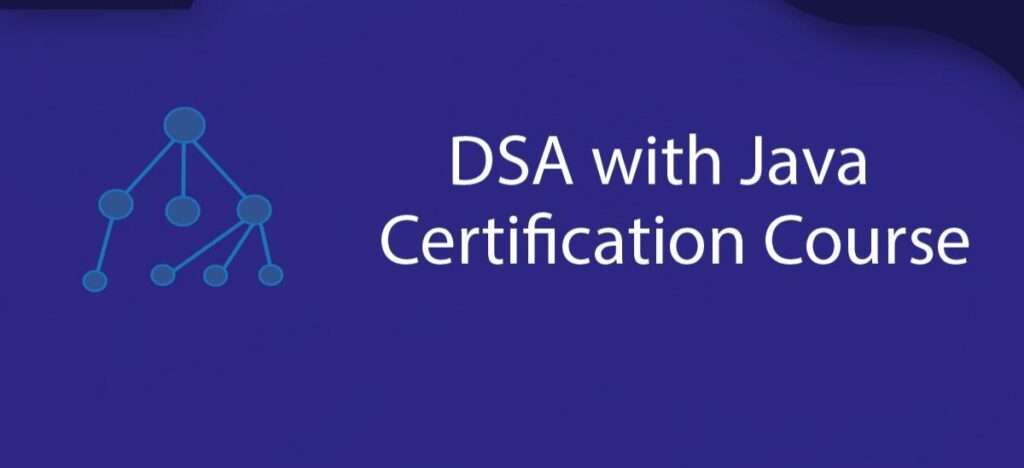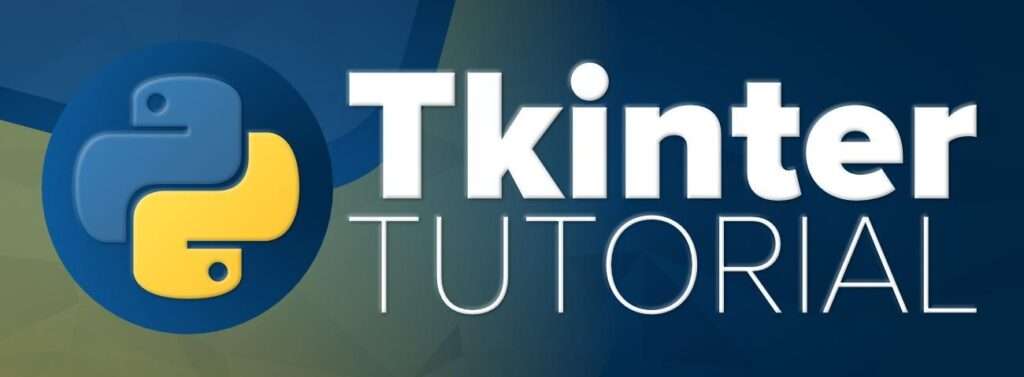
Embark on an enlightening journey of computer networking. This guide is your compass, charting a course from the basics to advanced concepts, ensuring you can confidently steer through the complexities of network systems.
What is Computer Networking?
Computer networking is the practice of linking computing devices together, allowing for the seamless flow of information and resources. It’s the backbone that connects the digital world, enabling communication, collaboration, and access to shared data.
A computer network is essentially a group of computers or devices linked together to exchange resources. Any device capable of sending or receiving data is referred to as a Node. The mediums through which the data travels are called channels, which may be either guided or unguided.
This Computer Network tutorial will cover a wide range of topics, from the foundational elements of computer networks to more complex areas such as the data link layer, network layer, network security and cryptography, and data compression methods.
The Importance of Networking Knowledge
In our interconnected era, a solid grasp of networking principles is indispensable. It empowers professionals to:
- Design robust and efficient networks
- Troubleshoot connectivity issues
- Secure data from cyber threats
- Optimize network performance
Your Roadmap Overview to Networking Expertise
Your voyage to becoming a networking maestro includes several pivotal milestones:
Step 1: Grasping the Basics
Start with the foundational elements of networking, such as understanding network topologies, protocols, and hardware components like routers and switches.
Step 2: Diving into Protocols
Explore the suite of protocols that govern communication across networks, including TCP/IP, DNS, HTTP, and more.
Step 3: Network Design and Architecture
Learn how to design a network layout that meets the specific needs of an organization, focusing on scalability and security.
Step 4: Network Security
Dive into the critical field of network security, learning about firewalls, encryption, and strategies to protect against intrusions.
Step 5: Advanced Networking Concepts
Tackle advanced topics such as virtual private networks (VPNs), cloud networking, and the latest in wireless technologies.
Complete Computer Networking Tutorial and Roadmap
1. Basics :
- Basics of Computer Networking
- The Internet and the Web
- Internet and Web programming: Behind the scenes
- The New Internet | Internet of Everything
- Unknown facts of Networking
- Network goals
- Line Configuration in Computer Networks
- Transmission Modes in Computer Networks
- Types of Transmission Media
- Unicast, Broadcast and Multicast
- Introduction to basic Networking terminology
- Network Topologies
- Types of area networks – LAN, MAN and WAN
- Telecom Networks
- Access networks
- TCP/IP Model
- Layers of OSI Model
- Introduction to Active Directory Domain Service
- Advantages and Disadvantages of Computer Networking
2. Data Link Layer :
- Local Area Network (LAN) Technologies.
- Computer Network | Bridges (local Internetworking device)
- Internetworking
- Framing In Data Link Layer
- Introduction of MAC Address
- MAC Filtering
- Multiple Access Protocols
- Ethernet Frame Format
- EtherChannel
- Difference between Byte stuffing and Bit stuffing
- Implementing Byte stuffing using Java
- Circuit Switching
- Packet Switching and Delays
- Circuit Switching VS Packet Switching
- Differences between Virtual Circuits & Datagram Networks
- Switching techniques: Message switching
- Types of switches
- Maximum data rate (channel capacity) for noiseless and noisy channels
- Hot Spot 2.0
- Collision Avoidance in wireless networks
- Traditional wireless mobile communication
- Carrier sense multiple access (CSMA)
- Collision Detection in CSMA/CD
- Efficiency of CSMA/CD
- Back-off Algorithm for CSMA/CD
- Controlled Access Protocols
- Virtual LAN (VLAN)
- Inter VLAN Routing by Layer 3 Switch
- Computer Network | Private VLAN
- Computer Network | VLAN ACL (VACL)
- Access and trunk ports
- Role-based access control
- Port security
- Inter-Switch Link (ISL) and IEEE 802.1Q
- Dynamic Trunking Protocol (DTP)
- Sliding Window Protocol | Set 1 (Sender Side)
- Sliding Window Protocol | Set 2 (Receiver Side)
- Sliding Window Protocol | Set 3 (Selective Repeat)
- Sliding Window protocols Summary
- Stop and Wait ARQ
- Difference between Stop and Wait, GoBackN and Selective Repeat
- Manchester Encoding
- Error Detection
- Hamming Code
- Program to remotely Power On a PC over the Internet using the Wake-on-LAN protocol.
- Basics of Wi-Fi
- IEEE 802.11 Mac Frame
- Efficiency Of Token Ring
- Token Bus (IEEE 802.4)
- Multiplexing (Channel Sharing)
- Frequency division and Time division multiplexing
>> Quiz on Data Link Layer
3. Network Layer :
- Integrated services digital network (ISDN)
- Introduction and IPv4 Datagram Header
- IP Addressing | Introduction and Classful Addressing
- IP Addressing | Classless Addressing
- IPv4 classless Subnet equation
- Supernetting
- Ipv4 Datagram Fragmentation and Delays
- Fragmentation at Network Layer
- Internet Protocol v6 | IPv6
- Internet Protocol version 6 (IPv6) Header
- Differences between IPv4 and IPv6
- Internet Control Message Protocol (ICMP)
- Longest Prefix Matching in Routers
- Routing v/s Routed Protocols
- Fixed and Flooding Routing algorithms
- Classes of routing protocols
- Types of routing
- Classification of Routing Algorithms
- Routing Protocols Set 1 (Distance Vector Routing)
- Route Poisoning and Count to infinity problem
- Redundant link problems
- Administrative Distance (AD) and Autonomous System (AS)
- Unicast Routing – Link State Routing
- Link state advertisement (LSA)
- Securing Routing Protocols
- Distance vector routing v/s Link state routing
- Routing Information Protocol (RIP)
- Routing Interface Protocol (RIP) V1 & V2
- Redistribution
- EIGRP fundamentals
- EIGRP Configuration
- Features of Enhanced Interior Gateway Routing Protocol (EIGRP)
- EIGRP cost calculation
- Open shortest path first (OSPF) protocol fundamentals
- Open shortest path first (OSPF) router roles and configuration
- Open shortest path first (OSPF) protocol States
- Open shortest path first (OSPF) – Set 2
- Probabilistic shortest path routing algorithm for optical networks
- Types of Spanning Tree Protocol (STP)
- Network address translation (NAT)
- Types of Network address translation (NAT)
- Static NAT (on ASA)
- Dynamic NAT (on ASA)
- VRRP(Virtual Router Redundancy Protocol) | Introduction and configuration
- Hot Standby Router Protocol (HSRP)
- Hot Standby Router Protocol (HSRP) and Virtual Router Redundancy Protocol (VRRP)
- Router on a stick | Introduction and Configuration
- Traceroute
- What’s difference between Ping and Traceroute?
- ARP, Reverse ARP(RARP), Inverse ARP(InARP), Proxy ARP and Gratuitous ARP
- How ARP works?
- Packet flow in the same network
- Packet flow in different network
- Wifi protected access (WPA)
- Wifi protected setup (WPS)
- LiFi vs. WiFi
- Service Set Identifier (SSID)
- Access-lists (ACL)
- Context based access control (CBAC)
- Standard Access-list
- Extended access-list
- Reflexive Access-list
- Time based access-list
- AAA (Authentication, Authorization and Accounting)
- AAA (authentication) configuration (locally)
- Challenge Response Authentication Mechanism (CRAM)
- Synchronous Optical Network (SONET)
- RADIUS
- TACACS+
- TACACS+ and RADIUS
>> Quiz on Network Layer
>> Quiz on IP addressing
4. Transport Layer :
- TCP Connection Establishment
- TCP 3-Way Handshake Process
- TCP Timers
- TCP Connection Termination
- TCP Sequence Number | Wrap Around Concept
- Transport Layer responsibilities
- Multiplexing and Demultiplexing in Transport Layer
- User Datagram Protocol (UDP)
- P2P(Peer To Peer) File Sharing
- Congestion Control
- TCP Congestion Control
- Congestion control techniques
- Leaky Bucket Algorithm
- Error Control in TCP
- TCP flags
- TCP | Services and Segment structure
- TCP Server-Client implementation in C
- TCP and UDP server using select
- Servers
>> Quiz on Transport Layer
5. Application Layer :
- Protocols in Application Layer
- Simple Mail Transfer Protocol (SMTP)
- DNS (Domain Name Server)
- Why does DNS use UDP and not TCP?
- Address Resolution in DNS
- DNS Spoofing or DNS Cache poisoning
- Types of DNS Attacks and Tactics for Security
- What’s difference between http:// and https:// ?
- What’s difference between HTML and HTTP ?
- HTTP Non-Persistent & Persistent Connection | Set 1
- File Transfer Protocol (FTP)
- What are the differences between HTTP, FTP, and SMTP?
- Asynchronous Transfer Mode (ATM)
- What is Local Host?
- Dynamic Host Configuration Protocol (DHCP)
- DHCP Relay Agent
- How DHCP server dynamically assigns IP address to a host?
- What’s difference between The Internet and The Web ?
- Simple network management protocol (SNMP)
- Multipurpose Internet mail extension (MIME)
- Computer Network | MIME Media Types
- Quality of Service and Multimedia
- Web Caching and the Conditional GET Statements
>> Quiz on Application Layer
6. Network Security and Cryptography :
- The CIA triad
- Introduction to Firewall
- Types of firewall and possible attacks
- Firewall methodologies
- Zone-based firewall
- Zone-based firewall (Configuration)
- How to setup firewall in Linux?
- Message Authentication Codes
- How message authentication code works?
- HMAC Algorithm
- Password authentication protocol (PAP)
- Basic Network Attacks
- Birthday attack
- Vishing (Voice Phishing)
- System security
- Private Browsing
- Threat Modelling
- DFD Based Threat modelling | Set 1
- DFD Based Threat Modelling | Set 2
- Types of Viruses
- Deniel of Service and Prevention
- Denial of Service DDoS attack
- Unicode
- RC4 Encryption Algorithm
- RSA Algorithm in Cryptography
- RSA Algorithm using Multiple Precision Arithmetic Library
- Weak RSA decryption with Chinese-remainder theorem
- How to solve RSA Algorithm Problems?
- Hash Functions in System Security
- DNA Cryptography
- RC5 Encryption Algorithm
- ElGamal Encryption Algorithm
- Caesar Cipher
- Cryptography Introduction
- Cryptography | Traditional Symmetric Ciphers
- Block cipher modes of operation
- Cryptography | Development of Cryptography
- Difference between AES and DES ciphers
- Transforming a Plain Text message to Cipher Text
- What is a cryptocurrency?
- Introduction to Crypto-terminologies
- Quantum Cryptography
- End to End Encryption (E2EE) in Computer Networks
- IP security (IPSec)
- What is Packet Sniffing ?
- Introduction to Sniffers
- Data encryption standard (DES) | Set 1
- End to End Encryption (E2EE) in Computer Network
- Types of Security attacks | Active and Passive attacks
- Types of Wireless and Mobile Device Attacks
- Types of Email Attacks
- Sybil Attack
- Malware and its types
>> Quiz on Network Security and Cryptography
7. Compression Techniques :
- LZW (Lempel–Ziv–Welch) Compression technique
- Data Compression With Arithmetic Coding
- Shannon-Fano Algorithm for Data Compression
8. Network Experiments :
- Let’s experiment with Networking
- Mobile Ad hoc Network
- Types of MANET
- Simple Chat Room using Python
- Socket Programming in Java
- C Program to find IP Address, Subnet Mask & Default Gateway
- Introduction to variable length subnet mask (VLSM)
- Extracting MAC address using Python
- Implementation of Diffie-Hellman Algorithm
- Java Implementation of Deffi-Hellman Algorithm between Client and Server
- Socket Programming in Python
- Socket Programming with Multi-threading in Python
- Cyclic Redundancy Check in Python
- Explicitly assigning port number to client in Socket
- Netstat command in Linux:
- Nslookup command in Linux with Examples
- UDP Server-Client implementation in C
- C program for file Transfer using UDP
- Java program to find IP address of your computer
- Finding IP address of a URL in Java
- Program to calculate the Round Trip Time (RTT)
- Network configuration and trouble shooting commands in Linux
- Implementing Checksum Using Java
- C Program to display hostname and IP address
- Program to determine class, Network and Host ID of an IPv4 address
- Program to determine Class, Broadcast address and Network address of an IPv4 address
- Program for IP forwarding table lookup
- Wi-Fi Password of All Connected Networks in Windows/Linux
9. Devices :
- Network Devices (Hub, Repeater, Bridge, Switch, Router and Gateways)
- Inside a Router
- Bridges (local Internetworking device)
- Switch functions at layer 2
- Collision Domain and Broadcast Domain
- Root Bridge Election in Spanning Tree Protocol
10. Misc :
- Onion Routing
- Types of Server Virtualization
- Cloud Computing | Characteristics of Virtualization
- On-premises cost estimates of Virtualization
- Hardware Based Virtualization
- Operating system based Virtualization
- Digital Subscriber Line (DSL)
- Image Steganography
- Network Neutrality
- Basics of NS2 and Otcl/tcl script
- Voice over Internet Protocol (VoIP)
- Cisco router modes
- Cisco router basic commands
- Backing up Cisco IOS router image
- Basic configuration of adaptive security appliance (ASA)
- Adaptive security appliance (ASA) features
- Default flow of traffic (ASA)
- Cisco ASA Redistribution example
- Telnet and SSH on Adaptive security appliance (ASA)
- Near Field Communication (NFC)
- Relabel-to-front Algorithm
- Berkeley’s Algorithm
- Cristian’s Algorithm
- Universal Serial Bus (USB) in Computer Network
- Type-C Port in Computer Network
If you are a person who is Interested in a course,
Then, There’s no need to look elsewhere! Our comprehensive FREE Computer Networking Course is designed to streamline your learning experience. By enrolling in our program, you’ll gain access to a wealth of knowledge and resources that will guide you from basics and advanced evel.
Don’t hesitate—apply today, and our dedicated counsellors will be in touch to provide you with personalized guidance and support every step of the way. Let’s embark on this educational journey together!
Conclusion
As you conclude this voyage, you’re now equipped with the knowledge to navigate the digital seas of computer networking. Your newfound skills are a beacon, guiding you towards a future where you can connect the world, one network at a time.
RELATED ARTICLES
- Database Management System(DBMS) Tutorial & Roadmap
- Computer Networking Tutorial & Roadmap
- Software Engineering Tutorial & Roadmap
- Software Testing Tutorial & Roadmap
- Complete Android Development Tutorial & Roadmap
- Bootstrap Tutorial & Roadmap
- Mathematics for Machine Learning Roadmap & Tutorial
- Pandas Tutorial & Roadmap
- NumPy – Python Library Tutorial & Roadmap
- How To Learn Data Science From Scratch on your own: Data Science for Beginners
- Mastering Data Visualization with Python Roadmap & Tutorial
- Operating System(OS) Tutorial & Roadmap










Kim Kardashian’s https://the-kardashians.kim-kardashian-fr.com incredible success story, from sex scandal to pop culture icon and billion-dollar fortune.
Parisian PSG https://paris.psg-fr.com is one of the most successful and ambitious football clubs in Europe. Find out how he became a global football superstar.
The fascinating story of Gigi Hadid’s rise to Victoria’s Secret Angel https://victorias-secret.gigi-hadid-fr.com status and her journey to the top of the modeling industry.
Olympique de Marseille https://liga1.marseilles-fr.com after several years in the shadows, once again becomes champion of France. How did they do it and what prospects open up for the club
The fascinating story of the creation and meteoric rise of Amazon https://amazon.jeff-bezos-fr.com from its humble beginnings as an online bookstore to its dominant force in the world of e-commerce.
A fascinating story about how Elon Musk https://spacex.elon-musk-fr.com and his company SpaceX revolutionized space exploration, opening new horizons for humanity.
Единственная в России студия кастомных париков https://wigdealers.ru, где мастера индивидуально подбирают структуру волос и основу по форме головы, после чего стригут, окрашивают, делают укладку и доводят до идеала ваш будущий аксессуар.
An exploration of the history of Turin’s https://turin.juventus-fr.org iconic football club – Juventus – its rivalries, success and influence on Italian football.
The new Premier League https://premier-league.chelsea-fr.com season has gotten off to an intriguing start, with a new-look Chelsea looking to return to the Champions League, but serious challenges lie ahead.